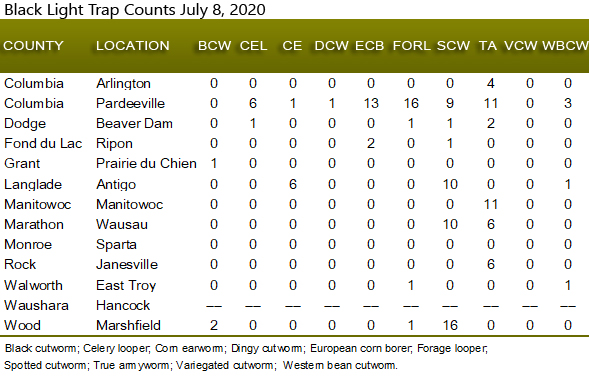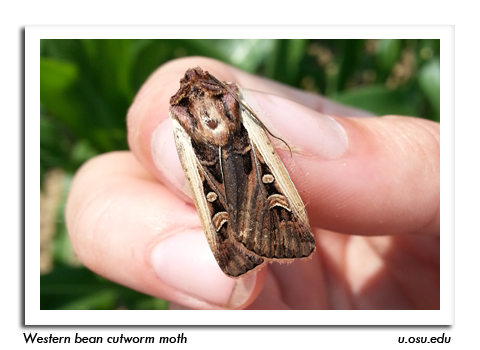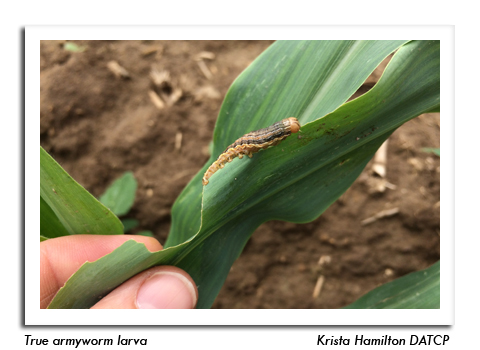
 |
|
|
Corn
Volume 65 Number 10 Date 07/08/2020 WESTERN BEAN CUTWORM - Moth emergence began by June 23, but DATCP's network of 58 pheromone traps has so far captured a total of only 4 moths. Based on the UNL-UMN cumulative flight model for this insect, 25% emergence of the adult population should occur in the next two weeks (July 12-22) across the southern half of Wisconsin. Scouting pretassel corn to estimate egg density is recommended. In fields where egg masses and small larvae are found on 5% or more of the corn plants, an insecticide treatment applied at 90-95% tassel emergence will be most effective. This application timing increases the chance that the caterpillars will be exposed to the insecticide. STALK BORER - Surveys of V8-VT corn found infestation rates of 1-38%, with the highest population noted in Sauk County. Treatment is no longer an option for many southern and western Wisconsin fields since the larvae have bored into the stalks and unemerged tassels. Treatments must be applied from 1,400-1,700 degree days (base 41°F), or prior to the V7 stage. Stalk borer feeding is unlikely to kill individual corn plants beyond V7. CORN ROOTWORM - Beetle emergence is underway in southern Wisconsin. Both the northern and western species were observed on July 8 in Dane County. These insects will become increasingly noticeable throughout the month, with peak emergence anticipated around mid-August. Although overall beetle pressure has been historically low in the state in recent years (2017-19), individual fields with root damage should still be expected. Based on the 2019 annual survey results, the highest risk areas are southwestern and south-central districts. Elsewhere in Wisconsin, very low populations (<0.3 beetle per plant) were documented last season. EUROPEAN CORN BORER - Larval infestation rates are generally less than 6% in surveyed fields. Corn borer caterpillars range in development from second to fifth instar, with the third instar being the most prevalent stage. Five of the 40 cornfields (13%) sampled from July 1-8 had signs of ECB infestation. JAPANESE BEETLE - The annual emergence is rapidly accelerating. Beetles are common at low levels in corn, soybeans, and fruit crops, and perimeter damage can be expected this month. For corn, the primary concern is to protect the silks from clipping since heavy beetle feeding on corn silks can impair pollination. Treatment may be justified for fields with three or more beetles per ear and silks that have been clipped to ½ inch when pollination is occurring (less than 50% complete). Japanese beetles collect on plants in the edge rows, emphasizing the importance of obtaining a representative sample from several areas throughout the field before making control decisions. Border row spot treatments may be sufficient if the beetles and damage are confined to the field edges. Beetles must be on the outside of the ear to be killed by contact insecticides. TRUE ARMYWORM - Economic populations were not found in the past week, but continued scouting is recommended, particularly for corn planted into a grass cover crop. The treatment threshold for armyworms varies depending on the size of the caterpillars and their expected feeding potential. The threshold for corn is reached when smaller caterpillars (¾-1 inch) are found on 25% plants, or if 75% of are infested with two caterpillars of any size. -- Krista Hamilton, DATCP Entomologist 


.jpg)
.jpg)

|
|
|